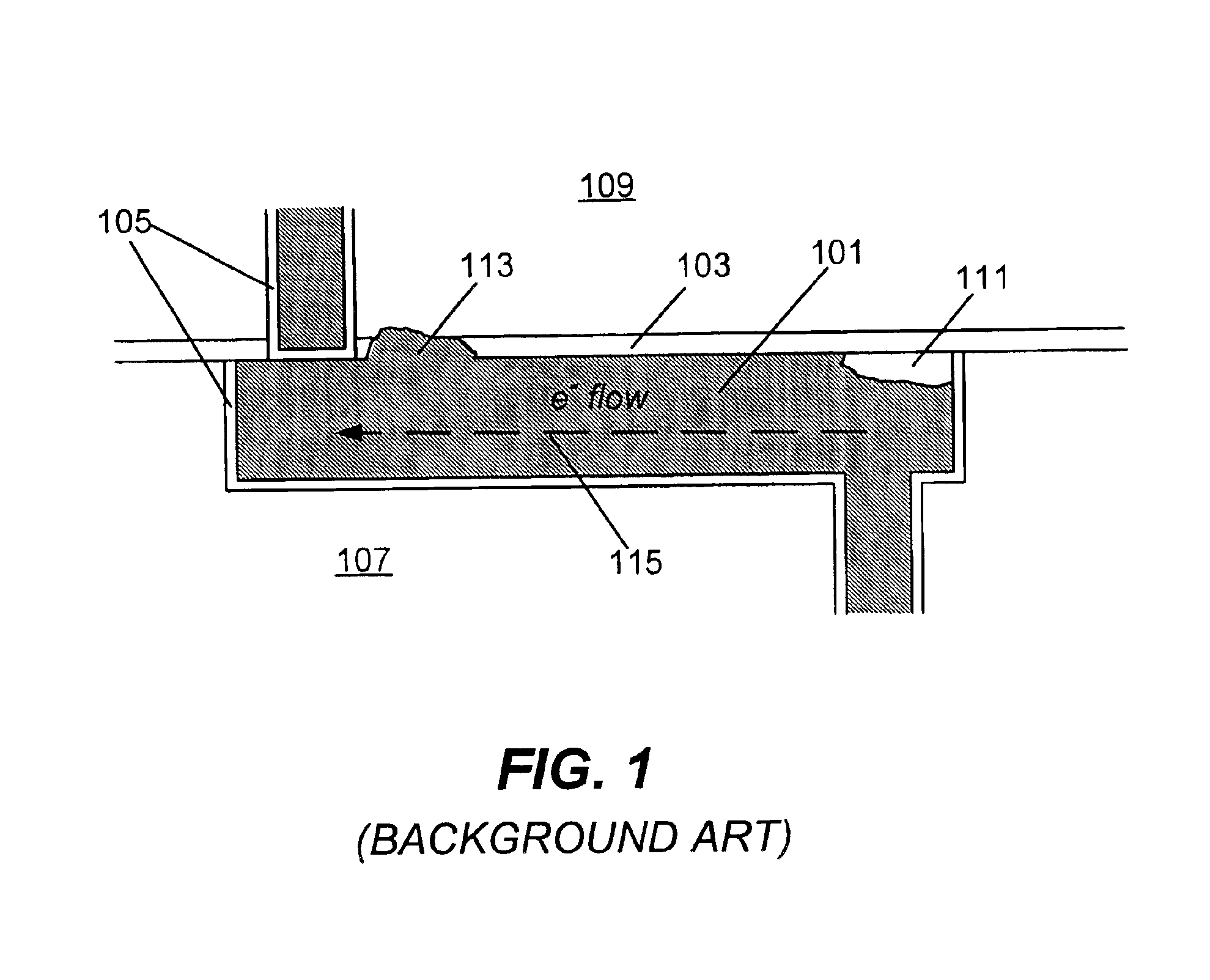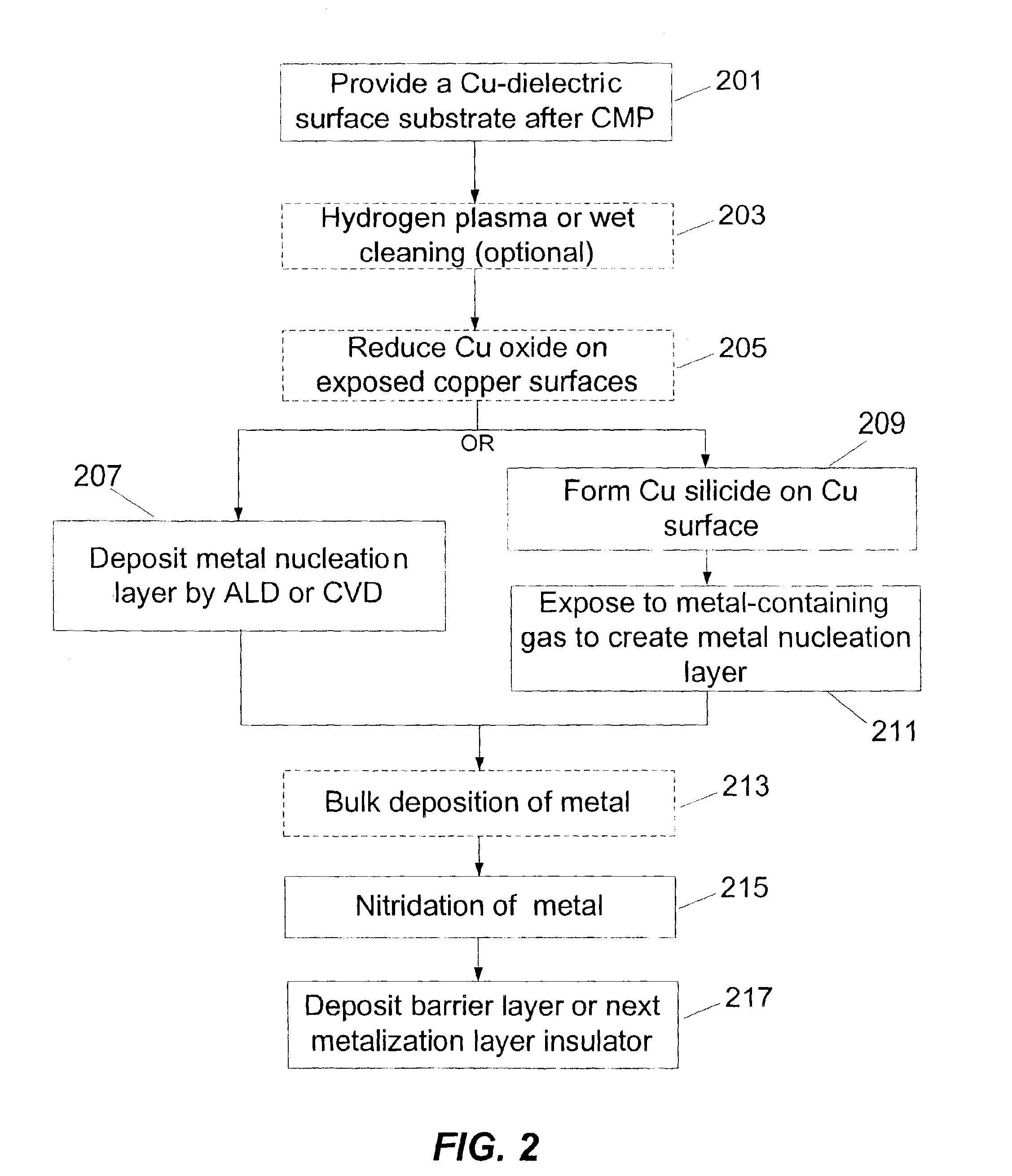Selective refractory metal and nitride capping
a refractory metal and selective technology, applied in the direction of semiconductor devices, semiconductor/solid-state device details, electrical apparatus, etc., can solve the problems of loss of selectivity in some regions, difficult initiation of deposition, and non-uniform film growth, etc., to prevent cu electromigration and diffusion
- Summary
- Abstract
- Description
- Claims
- Application Information
AI Technical Summary
Benefits of technology
Problems solved by technology
Method used
Image
Examples
Embodiment Construction
Introduction
As indicated, the present invention provides a capping layer of a refractory metal. That metal may be formed by first depositing a nucleation layer followed by a bulk layer. In some embodiments, the nucleation layer is all that is required. This may be the case when only a very thin refractory metal layer is required. With or without a bulk layer deposited on the nucleation layer, the invention may also employ a nitride layer formed from some or all of the refractory metal.
A typical process flow for the formation of a capping layer employed in accordance with this invention is illustrated in the flowchart of FIG. 2. First a partially fabricated semiconductor device is provided 201. This device has exposed copper lines in a dielectric support. In the case of a damascene process, the copper lines are inlaid in the dielectric support after the support has had line paths and vias etched therein. Typically the partially fabricated device has a planarized surface comprised of ...
PUM
 Login to View More
Login to View More Abstract
Description
Claims
Application Information
 Login to View More
Login to View More - R&D
- Intellectual Property
- Life Sciences
- Materials
- Tech Scout
- Unparalleled Data Quality
- Higher Quality Content
- 60% Fewer Hallucinations
Browse by: Latest US Patents, China's latest patents, Technical Efficacy Thesaurus, Application Domain, Technology Topic, Popular Technical Reports.
© 2025 PatSnap. All rights reserved.Legal|Privacy policy|Modern Slavery Act Transparency Statement|Sitemap|About US| Contact US: help@patsnap.com



